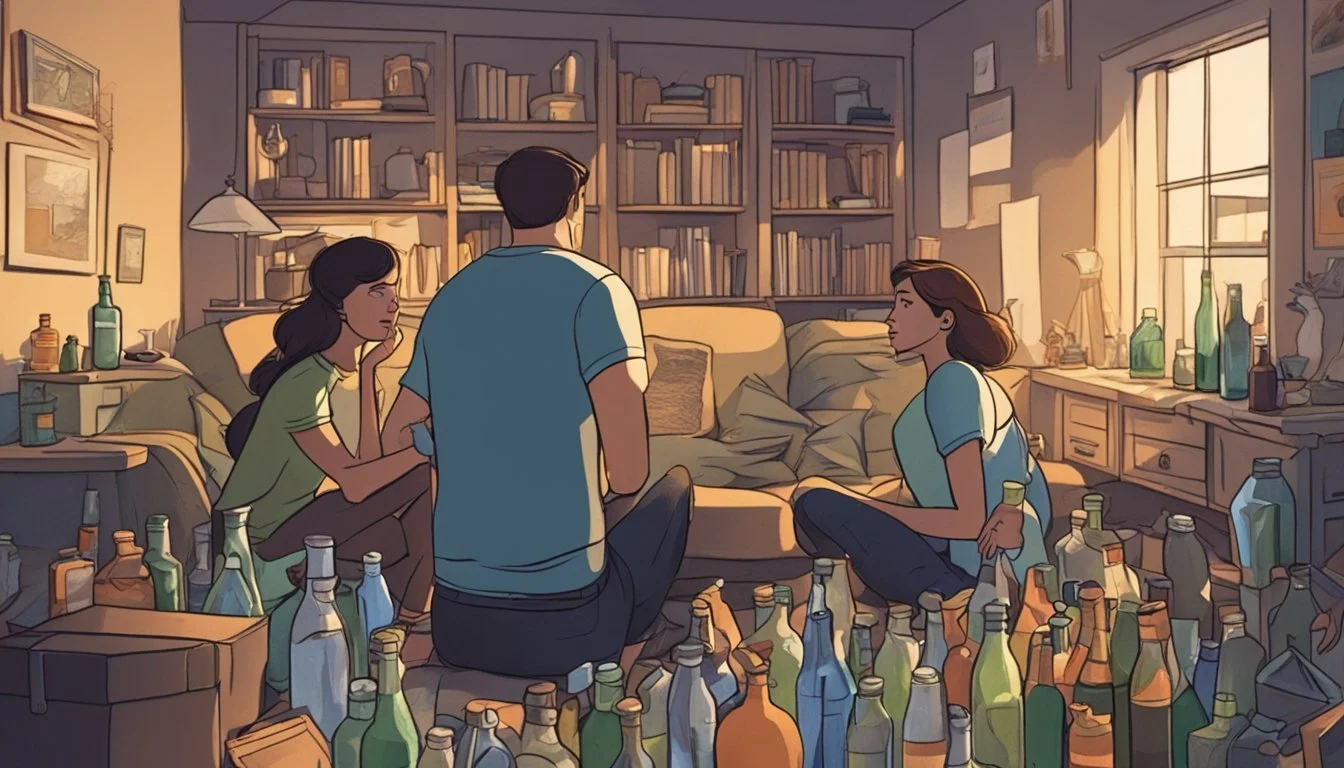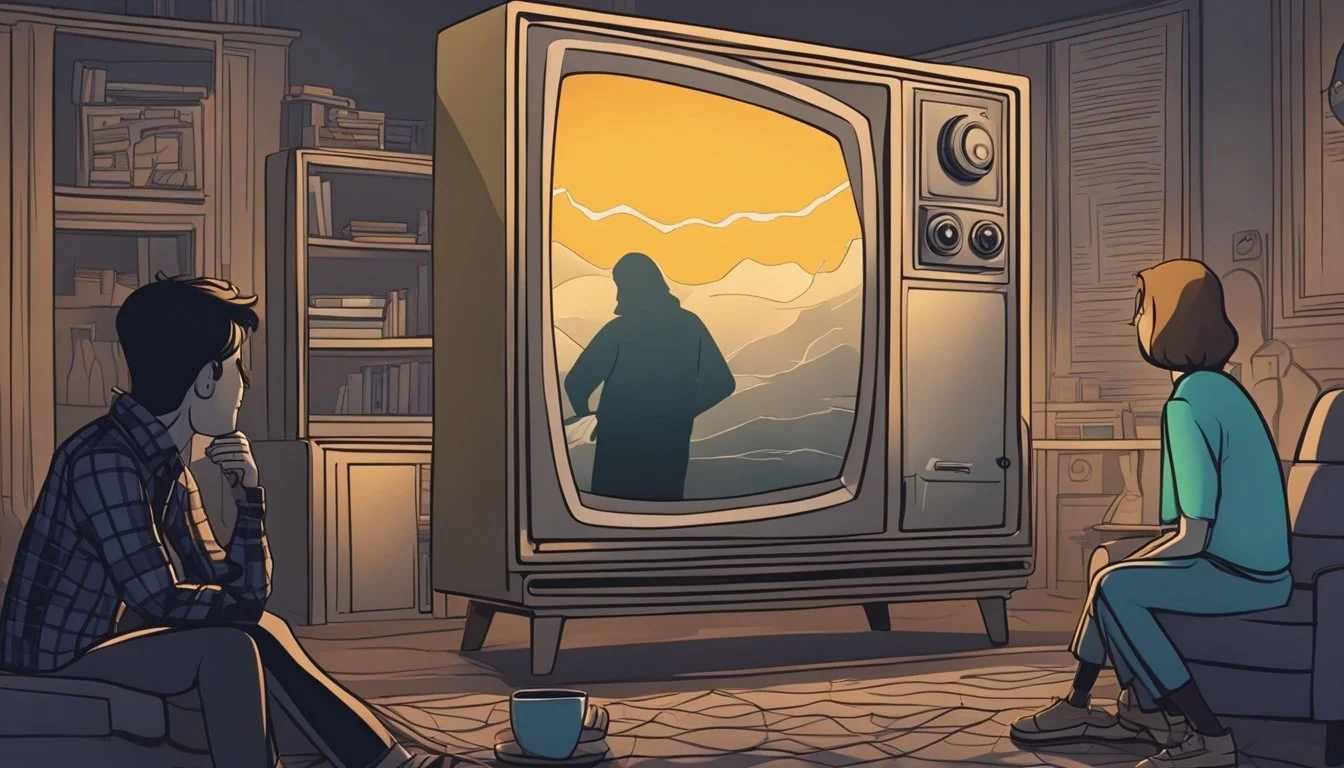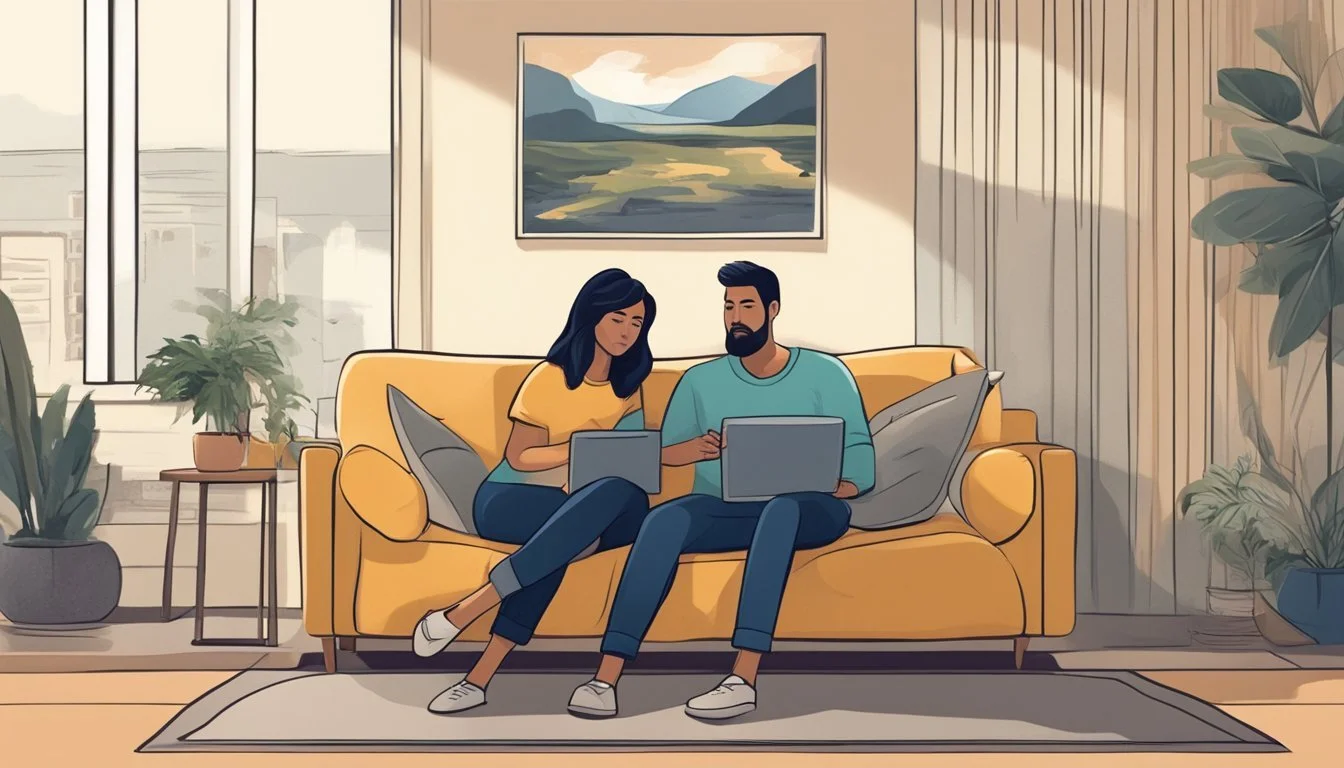Love Gone Wrong: The Allure of Toxic Relationship TV Shows We Can't Resist
Television shows often portray relationships that captivate audiences, even when they're far from healthy. These toxic pairings, characterized by manipulation, infidelity, or emotional abuse, paradoxically draw viewers in despite their problematic nature. Many popular TV series feature couples with deeply flawed dynamics that viewers find themselves rooting for against their better judgment.
From scandalous affairs to volatile on-again-off-again romances, toxic relationships permeate television dramas and comedies alike. Shows like Scandal, Grey's Anatomy, and Pretty Little Liars have showcased partnerships rife with lies, betrayal, and codependency. Even beloved characters like Miss Piggy and Kermit from The Muppet Show engaged in an unhealthy back-and-forth dynamic played for laughs.
These toxic TV relationships often blur the lines between love and obsession, passion and destruction. While they make for compelling drama, they can also normalize harmful behavior patterns. Recognizing these problematic elements in fictional couples can help viewers critically examine relationship portrayals in media and their own real-life experiences.
Understanding Toxic Relationships
Toxic relationships can have severe negative impacts on mental health and well-being. Recognizing the signs and understanding their effects is crucial for maintaining healthy connections and personal growth.
Defining Toxicity in Relationships
Toxic relationships are characterized by patterns of behavior that cause emotional or physical harm. These dynamics often involve control, disrespect, and a lack of support. Common toxic traits include constant criticism, jealousy, and emotional manipulation.
In toxic partnerships, one or both individuals may feel drained, anxious, or devalued. Healthy relationships, in contrast, foster mutual respect, trust, and personal growth.
Common Red Flags and Manipulation Tactics
Red flags in relationships can be subtle or overt. Gaslighting is a manipulation tactic where one person makes the other doubt their own perceptions. Love bombing involves excessive affection to gain control.
Other warning signs include: • Constant criticism or belittling • Excessive jealousy or possessiveness • Isolating a partner from friends and family • Disregard for personal boundaries
Recognizing these tactics early can help individuals protect themselves from potential harm.
The Psychological Impact of Toxic Relationships
Toxic relationships can lead to serious psychological consequences. Victims may experience lowered self-esteem, anxiety, depression, and even post-traumatic stress disorder.
Long-term exposure to toxic behavior can alter one's perception of healthy relationships. This may result in difficulty trusting others or forming new connections.
Recovery often requires professional support and a commitment to self-care. Therapy can help individuals rebuild self-worth and establish healthier relationship patterns.
Toxic Relationships in Television
Television often portrays toxic relationships, captivating audiences with dramatic and unhealthy dynamics between characters. These depictions can shape viewers' perceptions of love and partnership.
The Lure of Toxic Couples in TV Shows
TV couples in toxic relationships frequently draw viewers in with their intense chemistry and dramatic storylines. Shows like "Teen Wolf" feature characters like Derek Hale, whose romantic encounters often end in tragedy. The "Twilight" saga's Edward and Bella, though not a TV couple, exemplify the romanticization of problematic age gaps and controlling behavior.
Sitcoms also contribute to this trend, often playing toxic interactions for laughs. These portrayals can normalize unhealthy behaviors, making them seem acceptable or even desirable to impressionable audiences.
Many viewers find themselves invested in these tumultuous relationships, rooting for couples despite clear red flags. The appeal often lies in the passion and intensity these pairings exhibit on screen.
On-Screen Dynamics vs. Real-Life Consequences
While toxic TV relationships may be entertaining, they can have negative impacts on viewers' expectations and behaviors. On-screen, these dynamics often lack realistic consequences, glossing over the long-term effects of emotional manipulation, jealousy, and control.
In reality, such relationships can lead to severe psychological harm and trauma. TV shows rarely depict the full extent of damage caused by toxic partnerships, instead focusing on dramatic reconciliations or passionate moments.
It's crucial for audiences to recognize the difference between fictional portrayals and healthy real-life relationships. Educating viewers about the signs of toxicity can help prevent the normalization of harmful behaviors seen on screen.
Some shows have begun to address these issues more responsibly, showcasing the negative outcomes of toxic relationships and promoting healthier alternatives.
Notorious Toxic TV Couples
Television dramas often showcase relationships that captivate audiences but raise concerns about unhealthy dynamics. These couples exemplify problematic behaviors, manipulation, and power imbalances that persist over multiple seasons.
Pretty Little Liars: Aria and Ezra
Aria Montgomery and Ezra Fitz's relationship in Pretty Little Liars sparked controversy from the start. Their dynamic centered on a teacher-student affair, with Ezra initially unaware of Aria's age.
The power imbalance between them was significant. Ezra held authority as an educator, while Aria was a vulnerable teenager.
Their relationship involved secrecy and deception. This created stress for Aria, who had to lie to friends and family.
Ezra's motivations were questionable. It was revealed he knew Aria's age before their relationship began, raising ethical concerns about his intentions.
The Office: Ross and Rachel
Ross Geller and Rachel Green's tumultuous relationship in Friends (not The Office) captivated viewers for a decade. Their on-again, off-again dynamic set an unrealistic standard for romance.
The couple's inability to communicate effectively led to numerous misunderstandings. The infamous "we were on a break" debate highlighted their differing perspectives on commitment.
Jealousy played a significant role in their relationship. Ross's possessive behavior often strained their connection and trust.
Their pattern of reconciliation and breakup created an unstable environment. This cycle prevented both characters from growing individually and as a couple.
Buffy the Vampire Slayer: Spike and Buffy
Spike and Buffy's relationship in Buffy the Vampire Slayer was fraught with complexity and darkness. Their dynamic evolved from enemies to reluctant allies to lovers.
Their connection was rooted in violence and power struggles. Spike's initial obsession with Buffy bordered on stalking and aggression.
The relationship became physically and emotionally abusive. Spike's attempted assault on Buffy in season 6 marked a disturbing low point.
Buffy often used Spike as an escape from her emotional turmoil. This led to a destructive pattern of behavior that negatively impacted both characters.
Gossip Girl: Unveiling Unhealthy Bonds
Gossip Girl showcased several toxic relationships, with Chuck and Blair's dynamic standing out as particularly problematic. Their relationship was marked by manipulation and power plays.
Chuck's behavior was often controlling and emotionally abusive. He frequently used his wealth and influence to manipulate situations in his favor.
Blair engaged in schemes and mind games to maintain control. This created a cycle of mistrust and competition within the relationship.
Their on-again, off-again status kept viewers engaged but normalized unhealthy patterns. The couple's "grand gestures" often overshadowed underlying issues.
The show's glamorization of their toxic traits sent mixed messages about romance to its young audience.
Game of Thrones: Dysfunctional Relationships
Game of Thrones featured numerous dysfunctional relationships, reflecting the harsh realities of its fictional world. Cersei and Jaime Lannister's incestuous bond was central to the plot.
Their relationship was built on secrecy and deceit. This led to far-reaching consequences for the entire realm.
Daenerys and Khal Drogo's marriage began as a forced union. It evolved into a complex dynamic that blurred the lines between love and Stockholm syndrome.
Ramsay Bolton and Sansa Stark's marriage was purely abusive. It highlighted the show's brutal portrayal of power dynamics and violence.
These relationships often served as catalysts for major plot points. They demonstrated how personal connections could impact political landscapes.
Cheating and Infidelity on Screen
Television dramas frequently explore the turbulent waters of infidelity and its rippling effects on relationships. These storylines captivate audiences while reflecting societal attitudes towards cheating.
How Cheating is Portrayed in TV Shows
Infidelity in TV shows often serves as a catalyst for dramatic plot twists. Writers use affairs to create tension, shatter seemingly perfect relationships, and drive character development. Some programs depict cheating as a moment of weakness, while others portray it as a calculated decision.
Popular series like "Mad Men" and "The Affair" have made adultery central to their narratives. These shows delve into the emotional fallout and complex motivations behind infidelity.
Many TV portrayals emphasize the secretive nature of affairs, showcasing elaborate lies and close calls that keep viewers on edge. The discovery of cheating typically leads to intense confrontations and relationship upheavals.
The Normalization of Infidelity in Media
The frequent portrayal of cheating in TV shows has led to concerns about its normalization in media. Some critics argue that the prevalence of infidelity storylines desensitizes viewers to its harmful effects.
Certain programs present cheating as an almost expected element of long-term relationships. This approach can trivialize the pain and trust issues that real-life infidelity causes.
However, not all shows glamorize cheating. Many explore its devastating consequences, depicting the guilt, broken trust, and emotional trauma that follow. These portrayals aim to highlight the toxic nature of infidelity in relationships.
TV writers often use cheating storylines to examine broader themes of honesty, commitment, and personal growth. This approach can prompt viewers to reflect on their own values and relationship dynamics.
Subtle Toxicity: Will-They-Won't-They Couples
Will-they-won't-they couples captivate audiences with their ongoing romantic tension. This dynamic often masks underlying toxicity in these relationships, as characters repeatedly hurt each other while viewers root for their union.
The Allure of Uncertainty in Relationships
The excitement of will-they-won't-they couples stems from their unpredictable nature. Viewers become invested in the characters' romantic journey, eagerly anticipating their eventual union.
This uncertainty creates a sense of excitement and keeps audiences engaged. Many viewers see these couples as #relationshipgoals, idealizing their tumultuous dynamic.
However, the constant back-and-forth can indicate deeper issues. Characters may struggle with commitment, communication, or compatibility. Their inability to form a stable relationship often hints at underlying problems.
Dissecting the 'Will-They-Won't-They' Trope
The will-they-won't-they trope relies on prolonged romantic tension between two characters. Writers use various obstacles to keep the couple apart, such as:
Misunderstandings
Timing issues
External conflicts
Personal insecurities
These hurdles create drama but can also reveal toxic patterns. Characters may manipulate each other's feelings or prioritize the chase over genuine connection.
Popular examples include Ross and Rachel from "Friends" and Sam and Diane from "Cheers". While entertaining, these relationships often display unhealthy behaviors that would be problematic in real life.
Viewers should critically examine these dynamics rather than romanticizing them as relationship goals.
Toxicity Masked as Love
Many popular TV shows depict harmful behaviors and dynamics as passionate romance. This glamorization of toxicity can distort viewers' perceptions of healthy relationships.
Unpacking the Romanticization of Toxicity
TV series often present controlling, manipulative, or abusive actions as signs of deep love. Characters may pursue their love interests relentlessly, disregarding boundaries. Jealousy and possessiveness are framed as proof of devotion.
Some shows portray on-again, off-again couples as "meant to be," despite their tumultuous history. Volatile arguments followed by passionate reunions are depicted as normal. This reinforces the idea that true love is dramatic and painful.
Certain storylines glorify large age gaps or power imbalances between partners. These relationships are shown as forbidden yet alluring, ignoring real-world concerns.
Rewriting Narratives: From Toxic to Healthy Relationships
Media can play a role in reshaping relationship expectations. Some shows are beginning to subvert toxic tropes and showcase healthier dynamics.
Writers are creating characters who communicate openly, respect boundaries, and support each other's growth. Couples work through conflicts constructively rather than engaging in destructive patterns.
TV narratives are starting to explore the consequences of toxic behaviors. Characters face repercussions for manipulative actions instead of being rewarded.
Storylines increasingly depict individuals choosing self-respect over unhealthy attachments. This shift helps normalize walking away from harmful situations.
Criticism and Audience Reception
Toxic relationships in television shows have sparked debate among viewers and critics alike. The portrayal of unhealthy dynamics on screen has both captivated and concerned audiences.
Public Response to Toxic Relationships in Entertainment
Many viewers express conflicting feelings about toxic relationships depicted in popular shows. Some find these storylines compelling and dramatically satisfying, while others worry about their potential influence on real-life relationship expectations.
Critics argue that glamorizing unhealthy dynamics may normalize abusive behaviors. They point to shows like "Game of Thrones," where incestuous and violent relationships are central to the plot.
Conversely, defenders claim these portrayals serve as cautionary tales. They argue that seeing toxic behaviors played out on screen can help viewers recognize warning signs in their own lives.
Online platforms like BuzzFeed Community often feature spirited discussions about controversial TV couples. Fans debate whether certain relationships are truly toxic or simply misunderstood.
The Role of Fandoms in Perpetuating Unhealthy Relationship Ideals
Dedicated fan communities sometimes romanticize problematic relationships from their favorite shows. This can lead to the glorification of unhealthy dynamics.
Social media platforms become breeding grounds for fan theories and "ship" culture. Viewers may overlook red flags in fictional relationships, focusing instead on perceived chemistry or dramatic tension.
Some fandoms create elaborate justifications for abusive behaviors exhibited by beloved characters. This tendency can blur the lines between fiction and reality for impressionable viewers.
TV producers face a delicate balance. They must create engaging content while considering the potential impact on audience perceptions of healthy relationships.
Impact of Toxic Relationships Portrayals on Society
Media depictions of toxic relationships shape public perceptions and behaviors. They can normalize unhealthy dynamics and influence viewers' expectations of romance.
Influence on Relationship Perceptions and Behavior
TV shows featuring toxic couples like Joe Goldberg from "You" can distort viewers' understanding of healthy relationships. These portrayals often glamorize possessive or controlling behaviors as passionate love.
Young audiences are particularly susceptible to internalizing these harmful relationship models. They may come to see jealousy, manipulation, or even abuse as normal expressions of affection.
A survey found that 96.7% of high school students had been exposed to toxic relationships in media. 86.7% believed these portrayals negatively impact society.
The Need for Responsible Storytelling
Media creators have an ethical responsibility to depict relationships accurately. Showing the real consequences of toxic behaviors can educate viewers on warning signs.
Some shows are making efforts to highlight unhealthy dynamics. They contrast toxic couples with healthier relationships to demonstrate the differences.
Experts recommend balancing dramatic storytelling with realistic portrayals. This approach can entertain while promoting healthier relationship standards.
Media literacy programs can help viewers critically analyze relationship depictions. Teaching audiences to recognize toxic traits on screen may improve real-life relationship choices.
Moving Forward: Promoting Healthy Relationships on TV
Television has the power to shape perceptions of relationships. By featuring more positive portrayals, shows can help viewers recognize and aspire to healthier dynamics in their own lives.
Examples of Positive Relationship Dynamics in Shows
Some TV series have made strides in depicting healthier relationships. "I Love Lucy" portrayed a loving marriage between Lucy and Ricky Ricardo, despite occasional conflicts. The show emphasized communication, forgiveness, and mutual support.
In "The Muppet Show," Kermit and Miss Piggy's relationship evolved over time. While not always perfect, it showcased growth, compromise, and acceptance of each other's quirks.
"Teen Wolf" featured supportive friendships and romantic partnerships built on trust and teamwork. Characters like Scott and Allison demonstrated open communication and respect for boundaries.
How Healthy Portrayals Can Shift the Cultural Lens
Positive relationship depictions on TV can influence viewers' expectations and behaviors. By showcasing respectful communication, emotional support, and healthy conflict resolution, shows can model beneficial practices.
TV writers can prioritize storylines that highlight equality, mutual growth, and individual autonomy within relationships. This approach can help normalize healthier dynamics and challenge toxic stereotypes.
Diverse representation in healthy TV relationships is crucial. Showing a range of cultures, orientations, and relationship styles can broaden perspectives and promote inclusivity.






